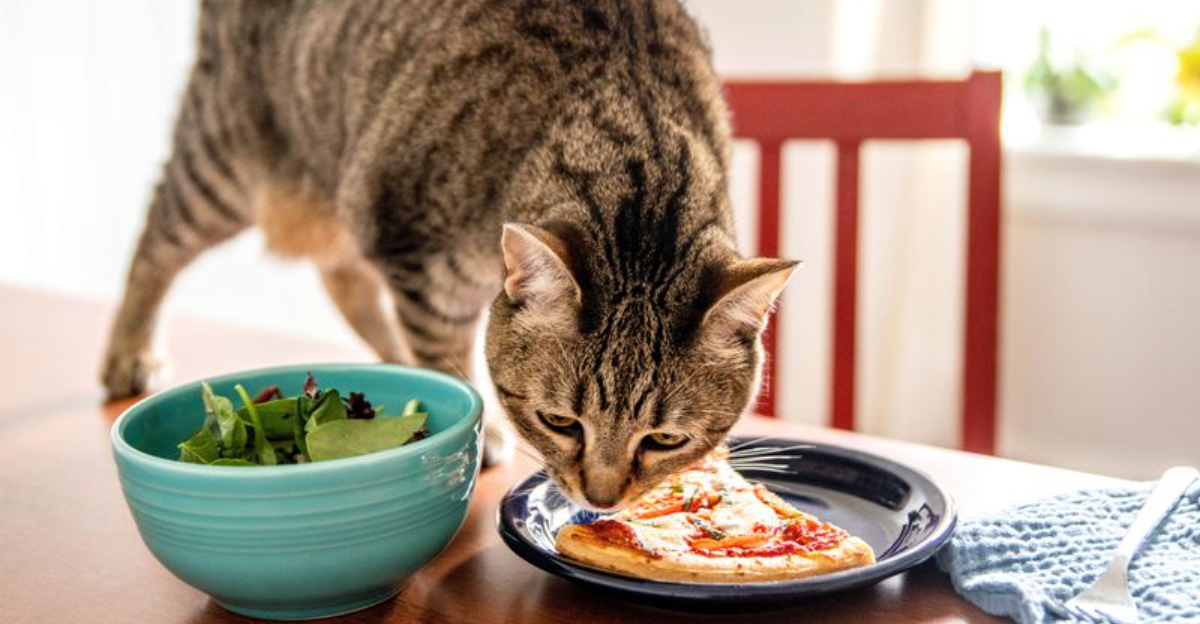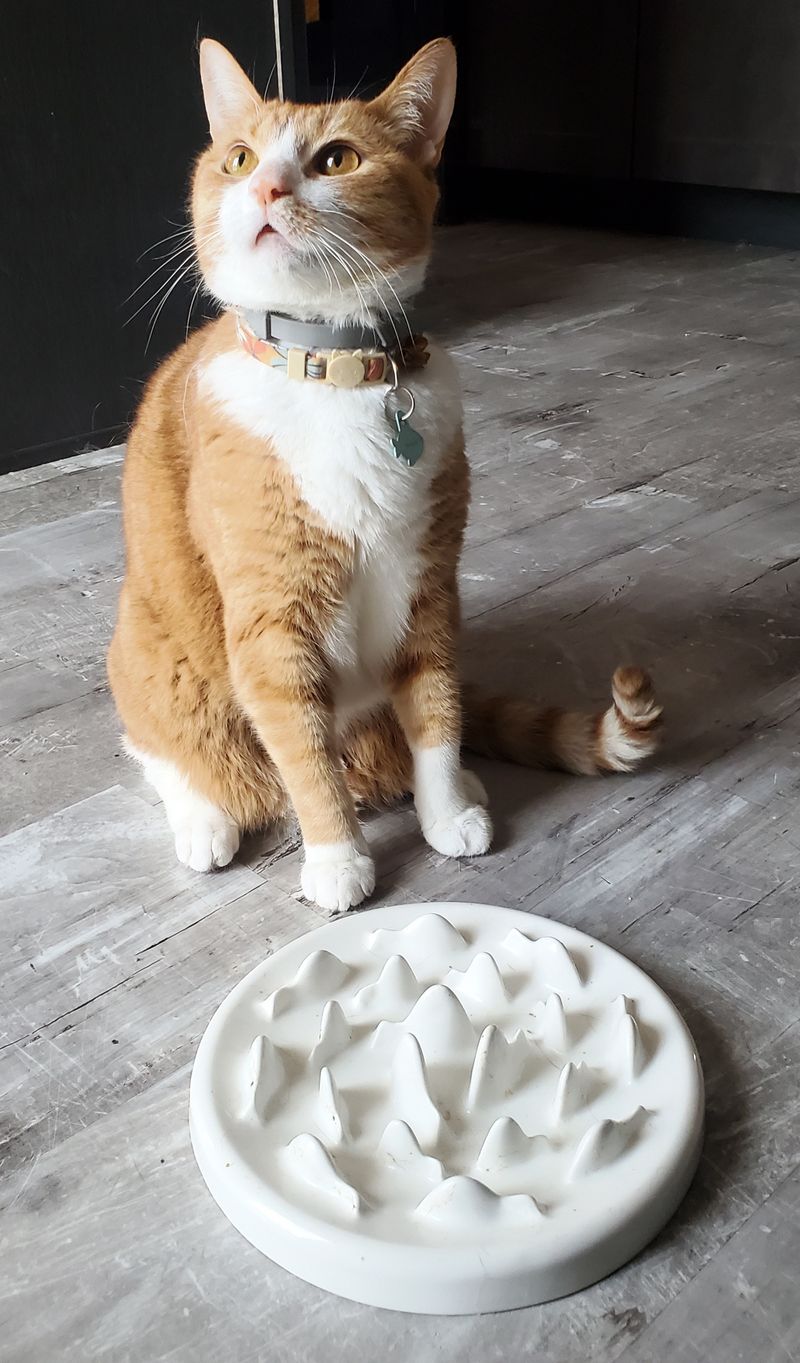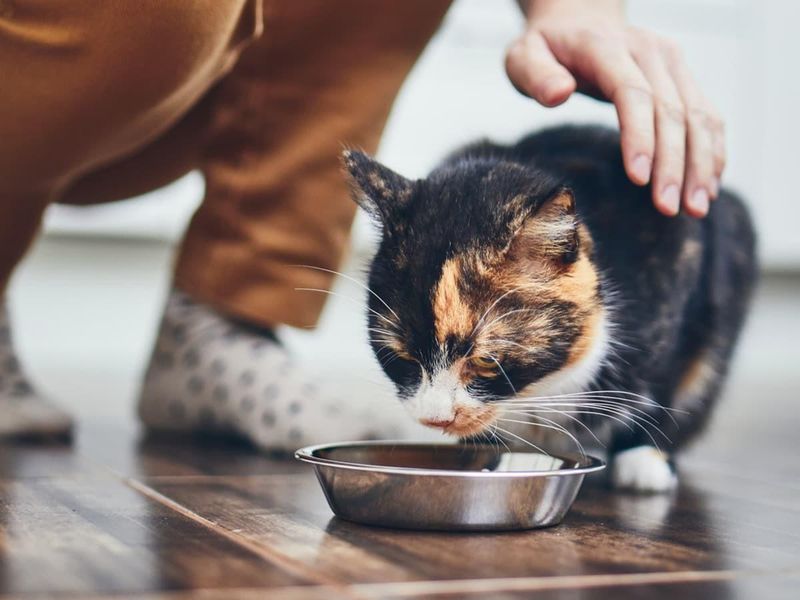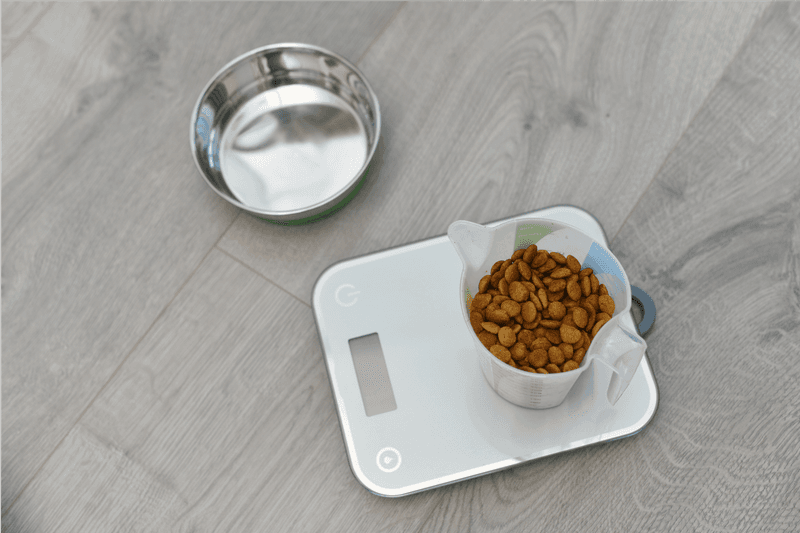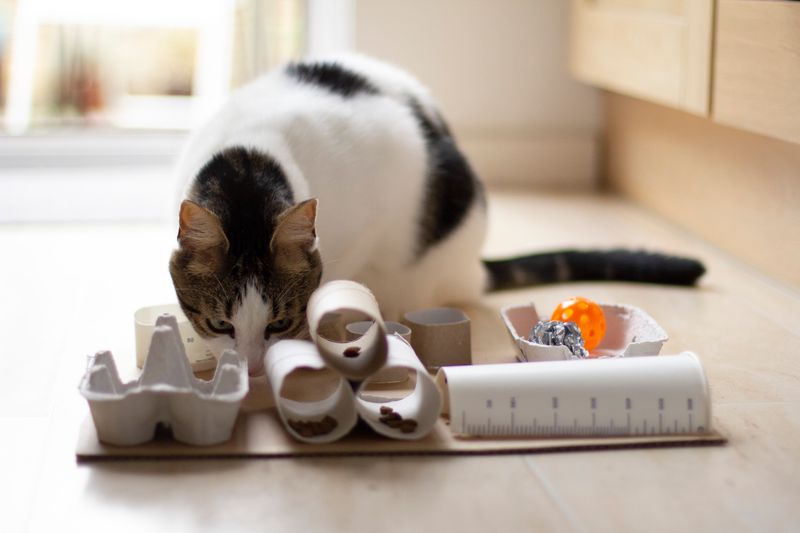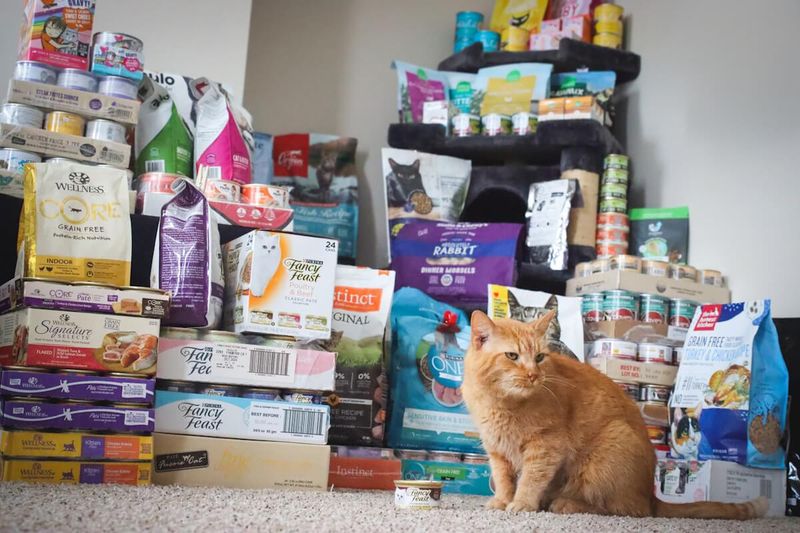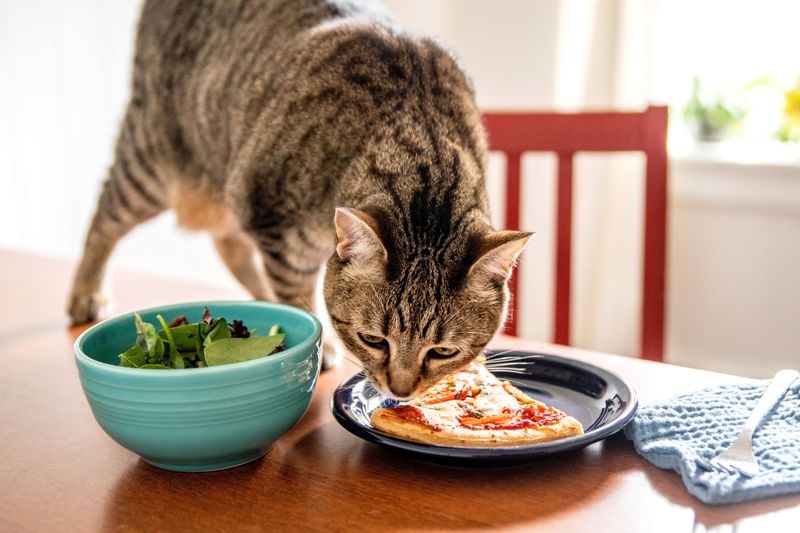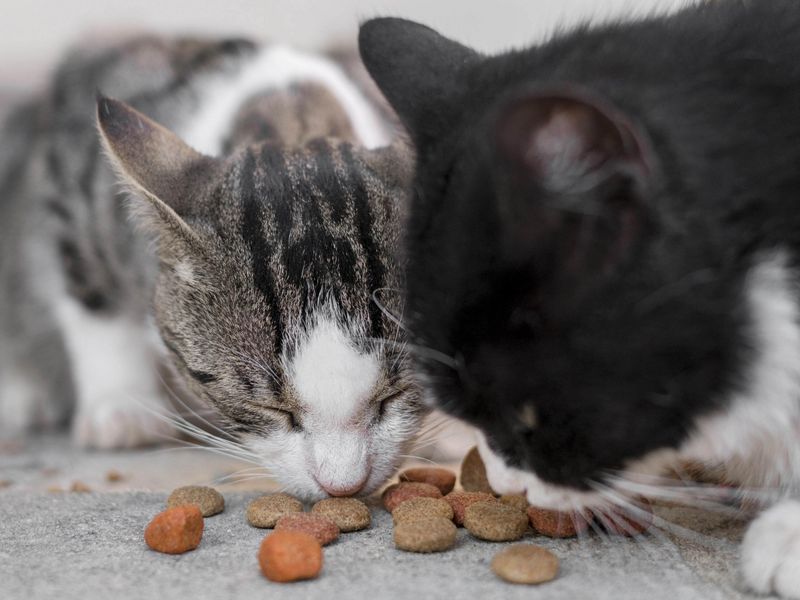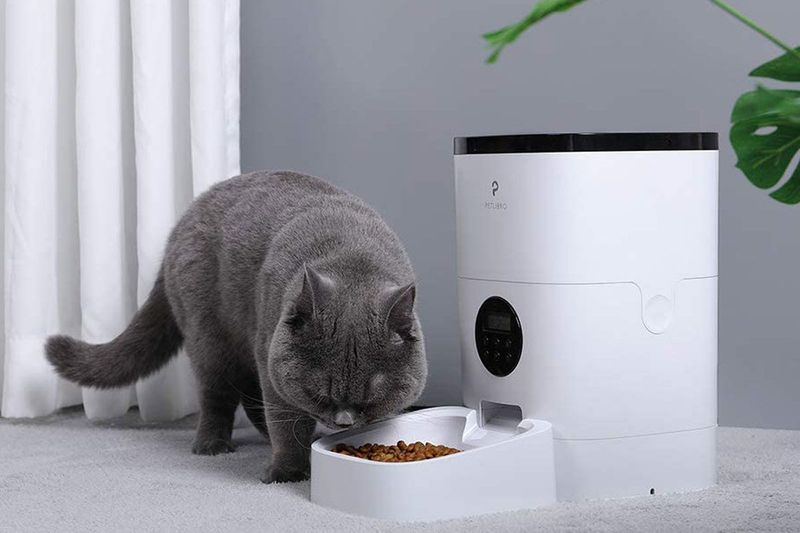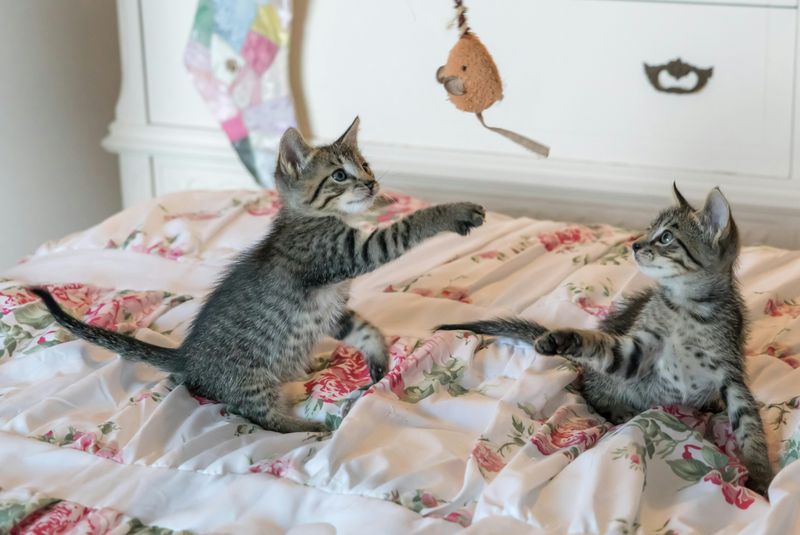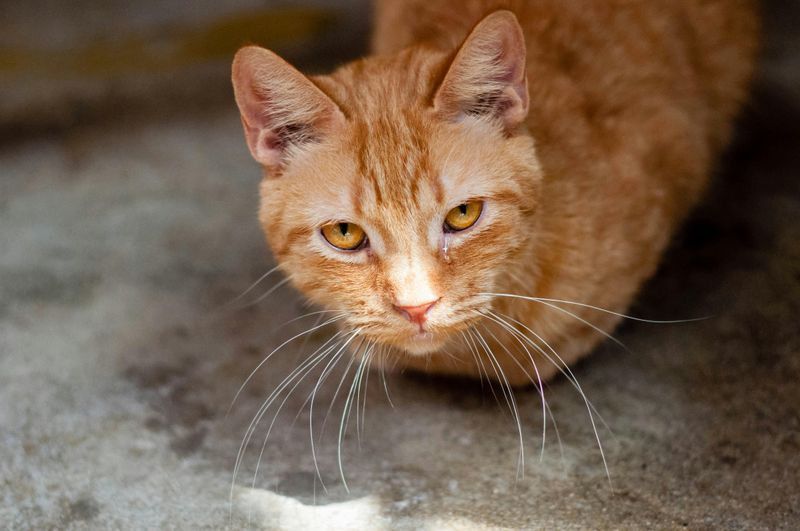📖 Table of Content:
If your cat acts like every meal is their last, you’re not alone. Food obsession is a surprisingly common issue among felines, whether they’re meowing at the crack of dawn, pawing at your dinner plate, or inhaling their kibble in record time. While some cats simply enjoy eating, others may develop unhealthy habits that can lead to weight gain, digestive issues, or constant begging that drives their humans up the wall.
The good news? Managing your cat’s intense relationship with food doesn’t have to be complicated. With a few simple adjustments to your daily routine, you can help curb your cat’s cravings and bring a little peace back into your home. From using clever feeding tools to changing how and when meals are served, there are plenty of easy strategies that make a big difference without stressing you—or your cat—out.
Whether your feline is a treat addict, a bowl licker, or just always seems “starving,” these tips can help you find the balance between keeping them satisfied and keeping their health on track. Let’s dive into 10 easy fixes that can calm the chaos at mealtime and help your cat develop healthier, more manageable eating habits.
1. Use a Slow Feeder Bowl
Many cats eat too quickly, which can lead to vomiting or constant hunger. Instead of a standard bowl, try a slow feeder with ridges or maze-like designs. These bowls naturally slow your cat’s pace, encouraging smaller bites. Interestingly, this simple switch can also reduce food obsession over time. For cats that inhale meals in seconds, it makes a noticeable difference. Even picky eaters often respond well to the change. Best of all, slow feeders are inexpensive and widely available online or at pet stores.
2. Stick to a Feeding Schedule
Cats thrive on consistency, and random mealtimes can fuel obsessive behavior. Set specific feeding times morning and evening to establish a routine. Over time, your cat will adapt and learn that food only comes at certain hours. This cuts down on the constant begging or following you into the kitchen. Surprisingly, structure can even ease food-related anxiety. Instead of grazing all day, they begin to feel more secure about when food arrives. Routine is one of the most underrated tools for feline behavior management.
3. Measure Every Meal
Often, cat parents accidentally overfeed by estimating portions instead of measuring. Using a kitchen scale or measuring scoop ensures consistency and calorie control. Tiny overages add up quickly, especially for indoor cats who don’t burn off much energy. Though it may seem tedious, this habit becomes second nature fast. Precise feeding supports healthy weight and reduces constant hunger signals. For example, you might find your cat needs less food than you’ve been giving. Portion control, when done right, can ease obsession without leaving your cat hungry.
4. Offer Food Puzzles
Puzzle feeders turn mealtime into a fun challenge that stimulates both body and brain. Instead of devouring food in seconds, your cat will need to think and interact to get each bite. Cats, especially those with high energy, benefit greatly from this kind of mental enrichment. Because the process is slower, it naturally curbs overeating. Even shy or anxious cats often take to puzzle toys with a little encouragement. You can start with simple versions or DIY your own using toilet paper rolls or muffin tins. Enrichment, not just discipline, is key to reducing obsession.
5. High-Fiber or High-Protein Food
Switching to a high-fiber or high-protein diet can maintain satiety for longer periods, reducing your cat’s urge to constantly graze. These foods are designed to be more filling and nutritionally dense. High-protein diets closely mimic a cat’s natural intake in the wild, providing the nutrients they thrive on. Meanwhile, high-fiber foods aid digestion and make them feel fuller longer. Transitioning gradually to these diets is recommended to avoid digestive upset. Consult your vet to ensure you’re meeting your cat’s specific nutritional requirements during the switch.
6. Cut Back on Treats
Treats can quickly add up, contributing to weight gain and unhealthy eating habits. Limiting treats to training moments helps manage calorie intake and maintains motivation for good behavior. Swap traditional treats for healthier alternatives, like small pieces of cooked chicken or specially formulated low-calorie treats. By being mindful of treat distribution, you reinforce the notion that treats are a special reward, not an expected norm. This shift not only promotes a healthier diet but also strengthens the bond during training sessions, making rewards more meaningful.
7. Separate Cats at Mealtime
In multi-cat households, mealtime competition can lead to overeating and food guarding. Feeding cats separately eliminates this stress, allowing each pet to eat at their own pace. Separating feeding areas ensures that each cat receives its appropriate portion without the pressure of finishing quickly. It also minimizes conflict and promotes a peaceful dining experience. This practice is particularly beneficial for cats with special dietary needs or those prone to stress-related eating, helping maintain harmony and a balanced diet within the household.
8. Use an Automatic Feeder
Automatic feeders are a modern solution for consistent portion control. These devices dispense pre-measured food at set times, preventing your cat from coaxing extra meals. Perfect for busy pet owners, automatic feeders ensure your cat eats on schedule, even when you’re away. This consistency helps prevent overeating and maintains a routine. With various settings and features, you can customize feeding to suit your cat’s needs, providing convenience and peace of mind. It’s an investment in your pet’s health and your daily routine efficiency.
9. Distract With Play Instead of Food
Sometimes a cat’s food obsession stems from boredom rather than hunger. Engaging your cat in play redirects their focus and provides a healthy outlet for their energy. Toys like wand teasers or balls can offer interactive fun, replacing the urge to eat with the joy of play. Regular play sessions also strengthen the bond between you and your pet. This strategy not only curbs unnecessary eating but also promotes physical activity, aiding in weight management and overall well-being. It’s a win-win approach to a common feline issue.
10. Rule Out Medical Issues
If your cat’s food obsession is sudden or extreme, it’s important to rule out medical conditions like hyperthyroidism or diabetes. A vet check-up can provide peace of mind and a proper diagnosis. Identifying an underlying issue early allows for timely treatment and management, ensuring your cat’s health isn’t compromised. Regular health checks are crucial in maintaining overall wellness. Should a medical issue be identified, your vet can guide you on dietary adjustments and treatment plans, helping manage your cat’s food behavior effectively and compassionately.
